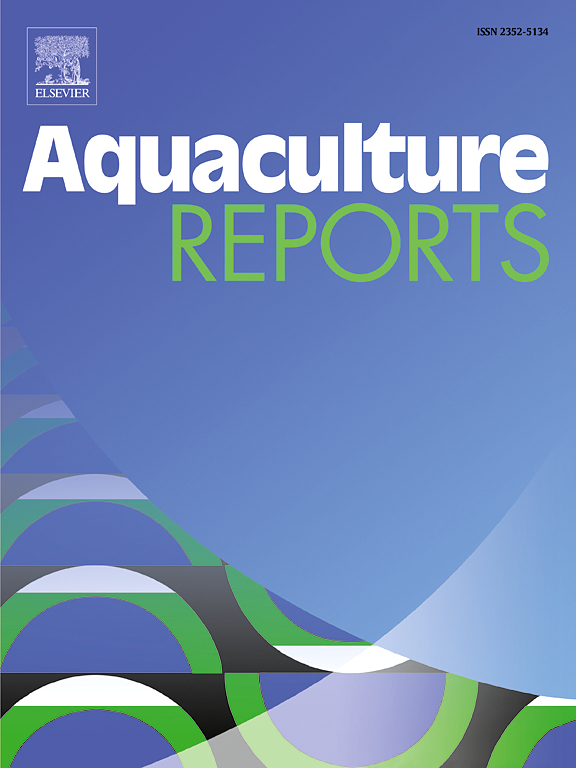Myo-inositol oxygenase: A key player in the battle of Pacific white shrimp (Penaeus vannamei) against low-salinity stress
IF 3.2
2区 农林科学
Q1 FISHERIES
引用次数: 0
Abstract
Salinity is an important physicochemical parameter in the aquatic environment that has a profound impact on the physiological processes of aquatic animals. Therefore, strong salinity adaptability is crucial for the survival of aquatic animals. This research investigated the physiological adaptation mechanisms of the economically significant aquaculture species Penaeus vannamei to low-salinity stress, with a focus on the myo-inositol metabolic pathway. This study cloned and identified the full-length cDNA sequence of Pv-miox, revealing its highest expression in the hepatopancreas and significant evolutionary conservation, potentially linked to salinity adaptation. Pv-miox dsRNA interference experiments revealed that shrimp mortality was reduced under acute low-salinity stress conditions. The main reason may be that reduced inositol metabolism leads to increased accumulation of myo-inositol in the gills, which alleviates the osmotic pressure imbalance of the body under low-salinity stress. Moreover, the oxidative stress, endoplasmic reticulum stress and inflammatory response caused by low-salinity stress are effectively regulated, avoiding excessive cell death. This study further clarifies the key role of myo-inositol metabolism in the adaptation of shrimp to low-salinity stress and helps to elucidate the physiological adaptation mechanism of crustaceans to low-salinity.
求助全文
约1分钟内获得全文
求助全文
来源期刊

Aquaculture Reports
Agricultural and Biological Sciences-Animal Science and Zoology
CiteScore
5.90
自引率
8.10%
发文量
469
审稿时长
77 days
期刊介绍:
Aquaculture Reports will publish original research papers and reviews documenting outstanding science with a regional context and focus, answering the need for high quality information on novel species, systems and regions in emerging areas of aquaculture research and development, such as integrated multi-trophic aquaculture, urban aquaculture, ornamental, unfed aquaculture, offshore aquaculture and others. Papers having industry research as priority and encompassing product development research or current industry practice are encouraged.
 求助内容:
求助内容: 应助结果提醒方式:
应助结果提醒方式:


